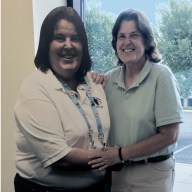We are in the high holidays for those who practice Judaism—the week of repentance and atonement. The 10 days from Rosh Hashana to Yom Kippor are variously referred to as the “10 Days of Awe” or “10 Days of Repentance” when one is supposed to atone for the sins of the past year.
One of my patients was explaining this to me and described the final prayer taken from the Mahzor prayer book with its recitation of all the possible sins or “het,” including major ones like murder, adultery and incest as well as minor sins such as laziness, impatience, gluttony and so on. Jokingly, my patient challenged me to create a prayer of joy instead of a prayer of atonement. Fair challenge.
The Judaic prayers of atonement, of course, reminded me of the Catholic rituals of confession, which asked one to enter the confessional once a month to face good old Father O’Leary. During my youth one would enter the dark confessional where Father O’Leary sat behind a screen and you would confess your sins such as “I have had impure thoughts,” “I cursed a lot,” “I lied to my mother,” and the worst, “I ate meat on Friday.”
If Father O’Leary had enough coffee and stayed awake through these inanities, he would then say: “Go, my son, and kneel at the alter and say three Hail Marys, three Our Fathers and an Act of Contrition.” And that was that.
Judaism and Catholicism share similar dynamics. The Judaic beating of the chest, the prayers to be recited on Yom Kippur and the kneeling on hard floors after confession in Catholicism seem to emphasize sin, guilt and atonement.
This is where psychoanalysis and religion part ways
In psychoanalysis there are two phases to reach the cure. The first step is similar to the confession of sins where the patient invariably has some inappropriate guilt, loss or shame buried in their unconscious. This must be uncovered or “confessed.” And just as Mephistopheles has power, so does the unconscious.
Neither want to let go. About halfway through the analysis, when the unconscious has been faced and “confessions” have been made, one must help the patient establish self-esteem, pride and joy for life. Just as my patient requested, it would be nice to offer them a prayer of joy or self-esteem that they could recite to help them to gain self-respect and a renewed love for life.
Great artists try to do that for the culture. Beethoven’s “Ode to Joy,” Walt Whitman’s “Song of Myself,” Thoreau’s “Walden Pond” or Otis Redding singing “The Dock of the Bay” all are deep expressions of joy and love for life.
So here is my “Prayer of Joy” for my patient to recite, enjoy and take within. Its not exactly the Holy Eucharist but then again I am not a priest or a rabbi.
‘The Prayer of Joy’
Remember your acts of kindness to your wife, kids, clients and your students.
Remember your acts of generosity like paying for my caddy fees.
Remember how disciplined you are by going to the trainer twice a week,
Remember how hardworking you are by working long hours, even on weekends,
Remember how faithful you have been to your wife.
Remember how you lead a balanced life filled with work, your family and travel.
So when you get to the pearly gates and God asks who you are and what have you done with your life you can say: “I have been me.” And then God will smile upon you. I promise.


































